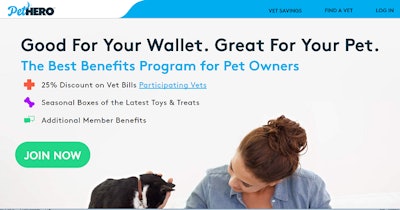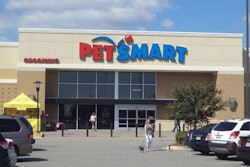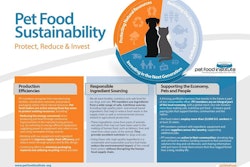
Pets and pet food are big business, and the market’s continued growth has grabbed the attention of all sorts of companies. Thus, we see and hear news nearly every week about another pet-related deal.
One of the latest: Time Inc., the venerable, large (though shrinking) media empire, is moving into the pet space with something fairly separate from publishing: a membership service called PetHero. This is Time’s first ever membership program, so it’s noteworthy that it’s aimed at pet owners.
Thanks to millions of subscriptions to its magazines and other media, Time has a wealth of consumer data, which it mined to determine that it reaches more than 100 million consumers who are pet owners or pet lovers, the company said. Starting at US$20 a month, a PetHero membership will offer these consumers pet treat and toy boxes, and 25 percent discounts on all in-house medical services by participating veterinary practices, among other benefits.
According to an article by Max Willens on Digiday.com, Time also plans to use this consumer data to target advertisers, including pet food brands. “For example, the same people who would be targeted for PetHero could also be available to marketers like pet product brand Purina to target,” he wrote.
(Interesting note: Time must not have done a thorough enough domain name search or didn’t care about domains outside the US; there is another website called PetHero, based in South Africa, selling pet foods and other supplies, including American brands. With the online world becoming less geographically specific, there could be a lawsuit in the making here.)
Another large (though definitely growing) company, Amazon, is already an established player in pet food and pet care, but it keeps diving deeper into these categories. Earlier this year the online giant announced a Beginner Pet Bundle service to “help new pet owners find what they need according to highly rated suggested products,” said Carli Gernot, manager of trends, North America, for Mintel. “The bundle’s landing page features a checklist with suggestions for essential categories including beds, collars and leashes, food, grooming supplies, kennels and toys recommended by other customers.” She added that the service meets consumer needs to “narrow down the vast array of options available to them.”
This may have been a short-lived offering; I was unable to find it on Amazon.com. But even a brief existence serves as another indicator of the importance of pet food and other pet supplies to Amazon’s business.
Human food trends: delivery robots to non-brands
With pet food trends so closely following – or even paralleling – those in human food, it’s worth tracking announcements regarding food and beverages, too. For example, a service called Postmates is taking the concept of food delivery to whole new levels by testing a fleet of 20 delivery robots in Washington, DC, USA. According to Mintel, a robot can receive a user’s request and be sent to the vendor, who places the order, in a temperature-controlled bag, in the robot’s compartment. The user receives a code to unlock the compartment and retrieve the order.
I could easily see this concept working for delivery of pet food. “Robot and drone technology are likely to become more mainstream: delivery services for food and other categories are appealing to consumers, especially those who are looking for ways to maximize their productivity through time-saving shortcuts, resources and tools,” said Iliana Alvarenga, trends analyst, North America, for Mintel.
Millennials are famous (perhaps infamous?) for not having much brand loyalty. So, speaking of taking things to another level, a new ecommerce website called Brandless kicks that notion up a notch, or three, and pairs it with the growing desire among nearly every demographic group to buy more and more products online, often at lower costs. In this case, most of the products are foods, along with smaller numbers of products for household supplies, beauty, personal care, health, home and office. The premise: nothing has a brand, and each product costs only US$3.
In turn, the premise is based on a concept the Brandless team calls BrandTax; they even trademarked it, apparently. “BrandTax is the hidden costs you pay for a national brand,” says the About page on the website. “We've been trained to believe these costs increase quality, but they rarely do. We estimate the average person pays at least 40 percent more for products of comparable quality as ours.” And, regarding that quality, particularly as it pertains to the food products: “Our vast food assortment is entirely non-GMO and well over half is organic. Our food is made without any artificial preservatives, flavors or colors.”
Currently no pet foods are included in the Brandless product assortment, but I wouldn’t be surprised if they appear eventually (the site is barely a month old). I could especially see pet treats fitting this model. Brand owners, beware.
Labeling healthy products with indulgent names
The features of the Brandless food products speak to a long-term human food trend toward natural and health focused – some of the concepts encompassed within the clean label trend. Yet many people still like to treat themselves with indulgent foods, to the point that research has shown that healthy foods with “indulgent” names are more appealing to diners than foods with healthier names, according to Mintel. “Researchers have concluded that delicious, indulgent descriptions will encourage people to eat more healthy foods, regardless of the fact that the food item itself never changes,” noted Gernot.
Perhaps the same principles could apply at some level to how pet owners choose foods for their furry family members. Though other research has shown that some pet owners report feeding their pets in a healthier manner than they feed themselves, the rising obesity rates among dogs and cats (another thing that parallels the human world) may indicate otherwise.

















